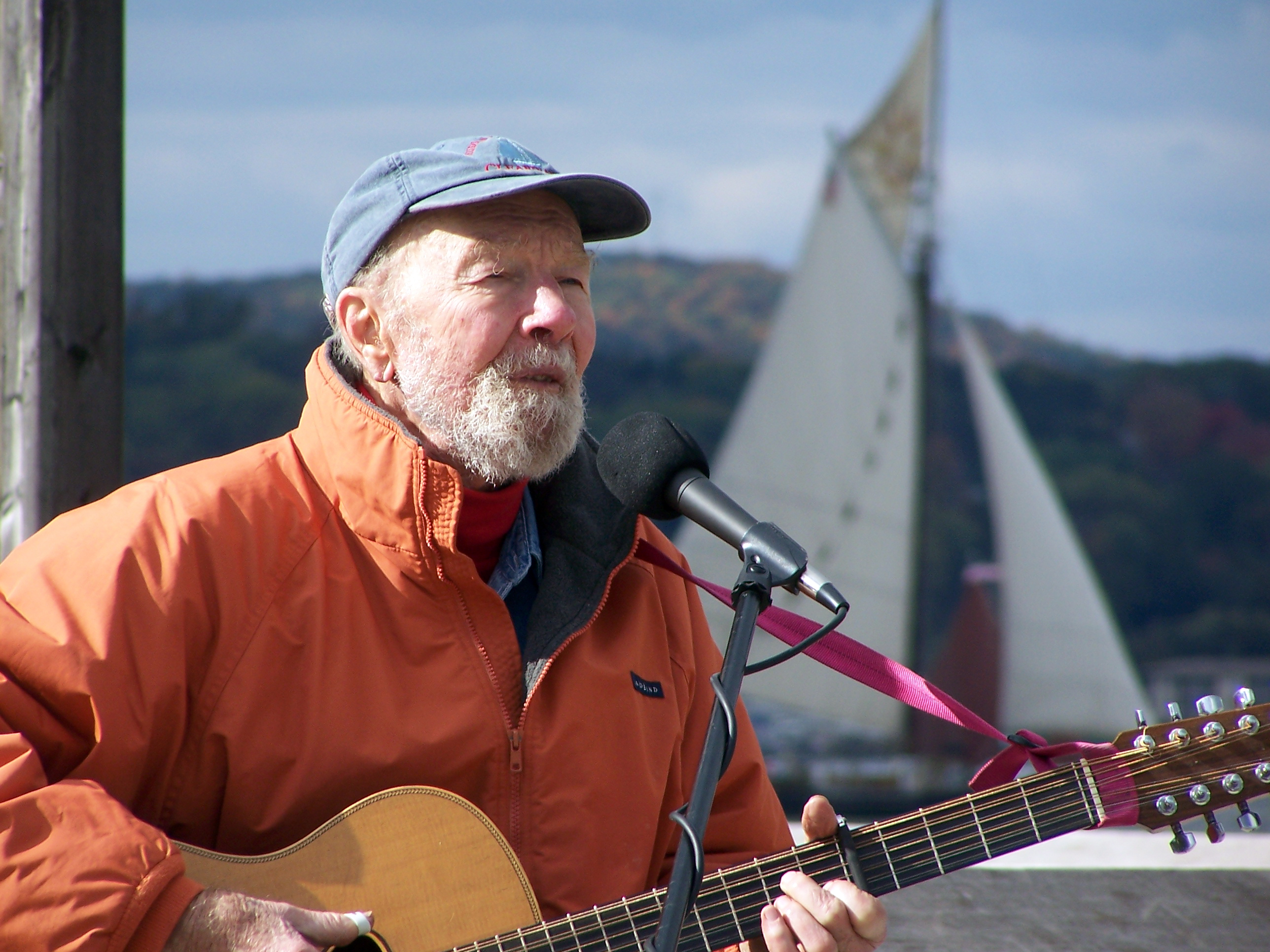Pete Seeger was basically a simple man. His parents let him introduce himself to music. They left different kinds of instruments around his house for him to play with. He chose “fretted stringed instruments,” as he described them in an interview. He started playing and collecting folk songs in the 1930s. His life's work focused on local, historical musical influences and showing how folk music expresses culture. He played 12-string guitar. He also was master of the 5-string banjo and literally wrote the book on how to play it. He saw the music as important for itself, but as a potent tool for political activism, as well; he said once said he'd like to be remembered as someone who “made up songs to try and persuade people to do something,” not just say something.
One song he collected and adapted was “We Shall Overcome.” (you can hear him sing it and see the words at http://www.youtube.com/watch?v=QhnPVP23rzo&list=RDD2h_ETDoTys). It was the anthem of the U.S. Civil Rights movement in the 1960s. It has been used to express non-violent protest against war and oppression throughout the world.
“Where Have All the Flowers Gone” was inspired by a song quoted in the novel And Quiet Flows the Don by Mikhail Sholokhov. Two more verses were added by Joe Hickerson in 1960, resulting in the peace song known in more than 20 languages today. This song is an example of what Seeger thought songs should do: grow and change with the conditions that surround them. (You can hear a version here: http://www.youtube.com/watch?v=IvC9sbK725M)
Seeger influenced many younger singers and with Woody Guthrie can be said to have started the folk music revival of the 60s and 70s in the US. Bob Dylan and Joan Baez were among the young singer-songwriters he influenced in the 60s, but he continued to inspire singer-songwriters throughout his life. He believed in music as a unifying force that can change the world person by person. On his 5-string banjo, he wrote the words: “This Machine Surrounds Hate and Forces it to Surrender.”
Yet his most lasting legacy may be a river.
In the 1960s, Seeger co-founded Hudson River Sloop Clearwater, Inc. A sloop is the sailing vessel that once carried goods and passengers on the Hudson River that flows between New York and New Jersey. The Hudson River in the 60s was so polluted it was said that Caribbean ships would sail into its waters so the poisons could kill the bore worms in their wooden hulls. Seeger set out to clean the river up. Everyone said it couldn't be done.
A new sloop, the Clearwater, was built with money raised by volunteers and through benefit concerts. She was launched in South Bristol, Maine in 1969 and sailed to the South Street Seaport Museum in New York City. Then she started to travel the Hudson.
She still sails the river, after more than 40 years. The Hudson is much improved, thanks in large part to the help of the organization Pete Seeger helped found and supported. You can now swim in water once so poisonous it could clean ship hulls of parasites. The Clearwater carries volunteer and professional crew members; her main job is to teach school kids about the river's ecology.
 |
| Pete Seeger plays his 12-stringwith Clearwater behind him. |
Bob Dylan once said of Pete Seeger, “He had this amazing ability to look at a group of people and to make them all sing parts of the song … he’d make an orchestration out of a simple song with everybody in the audience singing whether you wanted to or not and you’d find yourself singing the part and it’d be beautiful.”
So was Pete Seeger and the life he lived.
An excellent documentary film about Pete Seeger was produced in 2007; you can watch it at: http://www.youtube.com/watch?v=Czk2hj4VISg
You can learn more about the Clearwater project at: http://www.clearwater.org
No comments:
Post a Comment